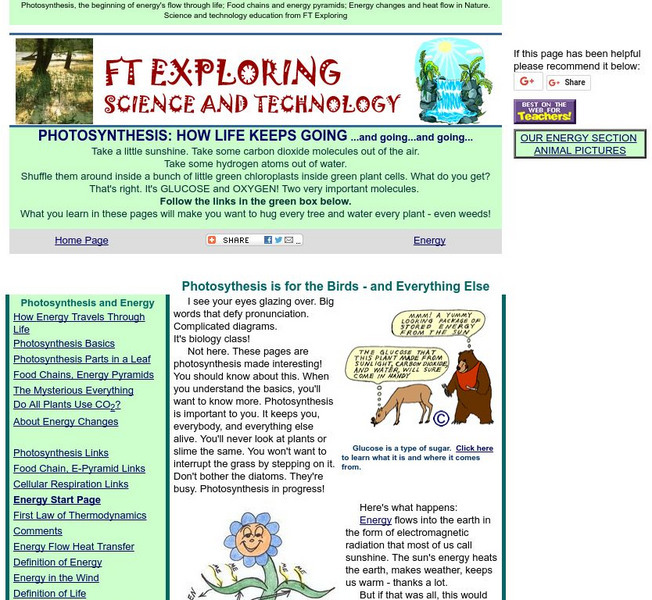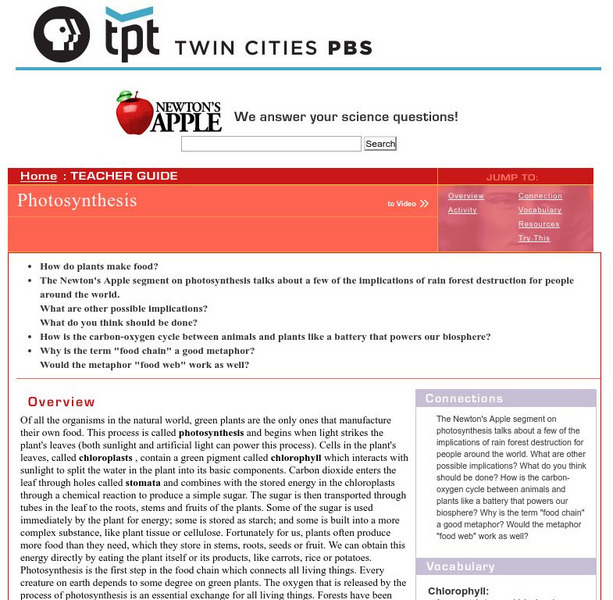Estrella Mountain Community College
On Line Biology Book: Photosynthesis
A comprehensive delve into the many facets of photosynthesis. Text is supplemented with effective pictures and graphs. Review questions can be found at the end of the site.
FT Exploring
Ft Exploring: Photosynthesis
Award winning site engages users with a colorful information on photosynthesis. Provides lesson plans as well as additional links for further study.
PBS
Newton's Apple: Photosynthesis: How Do Plants Make Food?
This Newton's Apple activity shows students what sunlight does for plants. David explores what happens to plants when the sun is shining and when it is not. He also looks at how plants survive in the desert.
BioMan Biology
Bio Man Biology: Photosynthesis Respiration Game!
Learn about the chemistry of photosynthesis and respiration as you play this game.
Treehut
Suzy's World: How Does a Tree Eat?
Use site from Suzy's world, which is a personal site from Suzy Cato, in order to learn how plants and trees "eat." Content includes fun facts and great experiment.
Bio Topics
Bio Topics: Photosynthesis
This site details the process of photosynthesis. Photosynthesis is the process of the production of oxygen by plants and carbon dioxide by animals, both of which are needed for respiration purposes.
PBS
Pbs: Illuminating Photosynthesis
What does a plant need to survive? How does a plant eat? Learn the basics of photosynthesis through poetry. Appropriate for 4th grade and above.
Arizona State University
Arizona State University: Photosynthesis Center
Educational site introduces users to Dr. Gene Splicer who is learning how plants and some other life forms use sunlight to grow and invites users to learn along with him.
Alberta Online Encyclopedia
Alberta Online Encyclopedia: Photosynthesis
In this encyclopedia entry, you will find concise text explaining photosynthesis supplemented by a very detailed diagram of the process.
Can Teach
A Demonstration of Photosynthesis and Transpiration
Students of all ages wonder what happens to a seed when you plant it in the ground. Try this basic experiment and let them explore, pose questions, and make predictions.









